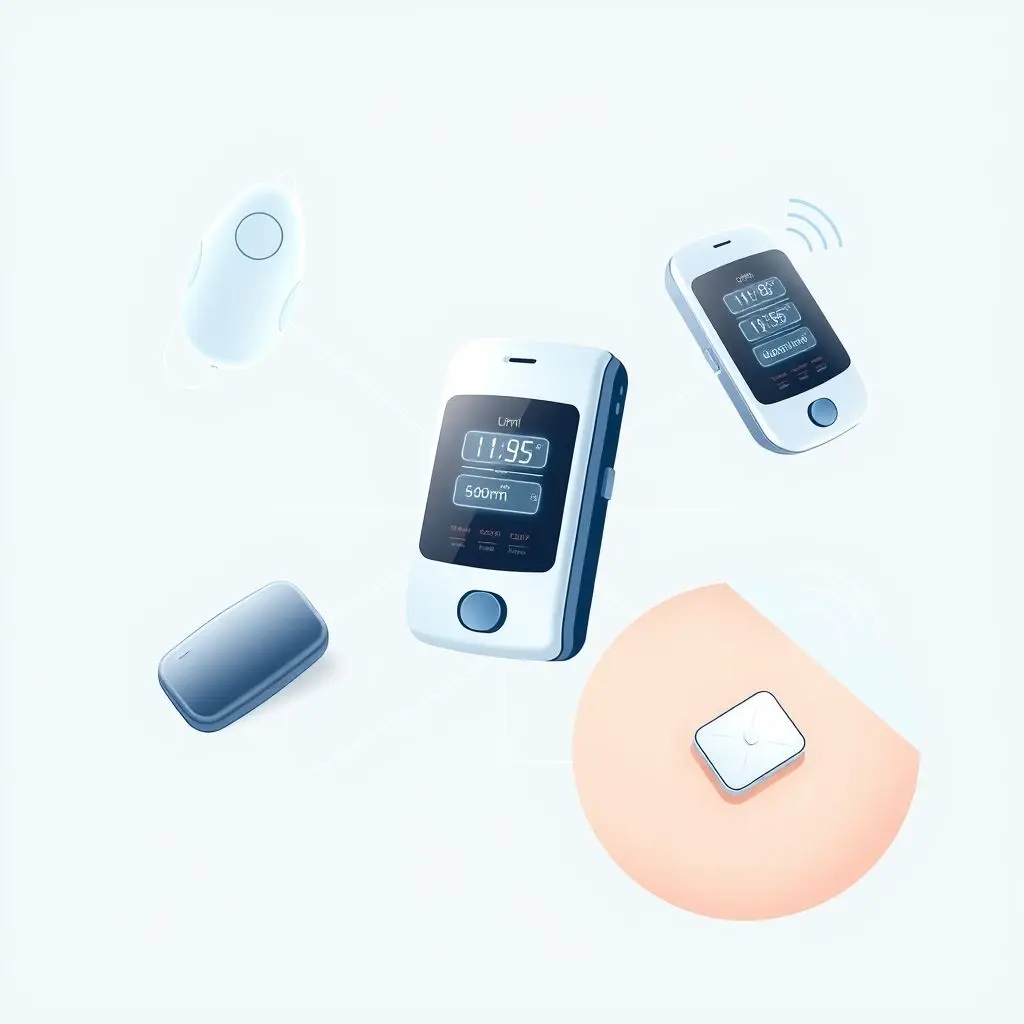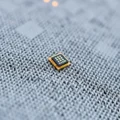Ever pictured your future health being plugged into a network? It sounds like something out of science fiction, but we’re rapidly moving towards a reality where medical implants aren’t just passive devices tucked inside you – they’re becoming sophisticated, connected data hubs.
Welcome to the realm of the Internet of Bodies (IoB), specifically focusing on how it’s transforming healthcare through integrated medical devices. Imagine a world where a tiny sensor within you constantly monitors your glucose levels, or your pacemaker doesn’t just regulate your heart rhythm but also sends real-time performance data directly to your cardiologist. This is the core of the IoB in medicine: using technology embedded *within* or connected *to* the body for continuous monitoring, diagnostics, and treatment.
These devices are designed to gather vital information, analyze it, and often transmit it wirelessly, enabling proactive health management and potentially preventing emergencies before they even happen. We’re talking about everything from advanced pacemakers and smart insulin pumps to miniaturized diagnostic sensors and perhaps, one day, even neural interfaces.
Table of Contents
How Connected Implants Work
At its heart, a connected medical implant functions much like other Internet of Things (IoT) devices, but with the critical difference that it resides inside the human body. These devices typically consist of:
- Sensors: These are the data gatherers, designed to measure specific biological parameters like electrical signals (heart rhythm), chemical levels (glucose, oxygen), pressure, temperature, or physical activity.
- Processors: Tiny microcontrollers that process the raw data from the sensors, often performing initial analysis or filtering.
- Communication Module: This is the connectivity part. It uses wireless protocols (like Bluetooth Low Energy, RFID, or proprietary medical bands) to transmit data from the implant outside the body to a receiver device.
- Power Source: Often a small battery, sometimes rechargeable wirelessly or designed to last for the device’s intended lifespan.
- Biocompatible Housing: The device is encased in materials that are safe and tolerated by the body’s tissues over long periods.
The data transmitted by the implant is received by an external hub – this could be a dedicated monitoring device kept near the patient, a smartphone app, or a gateway device in the patient’s home. From there, the data is often securely transmitted to a cloud platform, accessible by healthcare providers for remote monitoring and analysis.
This constant flow of information allows doctors to track a patient’s condition remotely, identify potential issues early, adjust treatments proactively, and gain insights into how a patient’s body is responding outside of clinical visits.

Real-World Examples of Connected Medical Devices
The IoB in healthcare isn’t a distant future concept; many connected medical devices are already in use today, significantly improving patient lives.
- Pacemakers and Implantable Cardioverter-Defibrillators (ICDs): Modern cardiac implants are often equipped with wireless capabilities. They monitor heart rhythm and device function, transmitting data regularly (often daily) to the patient’s cardiologist. This allows for early detection of arrhythmias, lead malfunctions, or battery depletion without requiring frequent in-person checks. Some can even send alerts for critical events.
- Smart Insulin Pumps and Continuous Glucose Monitors (CGMs): For people with diabetes, CGMs use a tiny sensor inserted under the skin to measure glucose levels in interstitial fluid in real-time. This data is wirelessly sent to a receiver or smartphone. Smart insulin pumps can receive this CGM data and, in closed-loop systems (artificial pancreas), automatically adjust insulin delivery, significantly improving blood sugar control and reducing the burden of manual monitoring.
- Neurostimulators: Used for conditions like Parkinson’s disease or chronic pain, some neurostimulators offer remote programming and monitoring capabilities, allowing clinicians to fine-tune therapy settings without requiring the patient to be physically present in the clinic.
- Implantable Loop Recorders: These small, insertable devices continuously monitor heart rhythm for up to several years, helping diagnose infrequent arrhythmias that might be missed by standard external monitors. They can transmit data wirelessly to a remote monitoring system.
- Future & Emerging Devices: Research is ongoing for implants that can monitor blood pressure within arteries, sensors that detect early signs of infection or inflammation, and even ingestible capsules that can perform diagnostic imaging or drug delivery internally.

The Promise: Benefits of Connecting Our Bodies
The integration of connectivity into medical implants offers transformative potential for healthcare:
- Real-time Monitoring and Early Intervention: Healthcare providers get immediate access to vital data, allowing them to spot concerning trends or critical events as they happen, enabling quicker interventions that could be life-saving.
- Improved Patient Outcomes: Continuous data allows for highly personalized and timely adjustments to treatment plans, leading to better management of chronic conditions and improved overall health.
- Reduced Hospital Visits: Remote monitoring decreases the need for routine in-person check-ups for device function and basic parameter checks, saving patients time and reducing healthcare costs.
- Proactive and Predictive Healthcare: Analyzing large datasets from connected implants can help identify patterns and predict potential health issues before symptoms become severe, shifting the focus from reactive treatment to proactive prevention.
- Enhanced Patient Empowerment: Patients can often access their own data via apps, gaining better insights into their health status and becoming more engaged in their own care.
The Flip Side: Security, Privacy, and Ethical Considerations
While the benefits are compelling, connecting devices embedded within our bodies introduces significant challenges that must be addressed.
- Data Security: Medical data is among the most sensitive personal information. Ensuring the robust encryption and secure transmission of data from the implant, through gateways, and into cloud storage is paramount. A breach could expose highly private details about a person’s health.
- Cybersecurity Risks: The terrifying prospect of a medical device being hacked is a major concern. While complex, a successful attack could potentially interfere with device function (e.g., altering pacemaker settings or insulin delivery), posing direct physical harm to the patient.
- Privacy: Who owns the vast amounts of data generated by these devices? How is it used? Ensuring transparency and giving patients control over their data is critical. There are concerns about data being used for purposes beyond individual medical care, such as by insurance companies or advertisers.
- Regulatory Hurdles: Ensuring the safety, efficacy, and security of connected implants requires rigorous testing and clear regulatory frameworks (like those from the FDA in the US). As technology evolves rapidly, regulation must keep pace.
- Ethical Dilemmas: Issues like equitable access to these advanced technologies, potential for data bias, the digital divide affecting who benefits, and the long-term societal impact of integrating technology so intimately with our biology all require careful consideration and public discussion.

This convergence of biology and technology is certainly food for thought. If you found this brief dive into the Internet of Bodies and connected medical implants intriguing or perhaps a little mind-blowing, you might want to check out this short video we put together:
The Horizon: What’s Next for the IoB in Healthcare?
The current state of connected implants is just the beginning. The future promises even more sophisticated devices. We might see implants capable of advanced diagnostics within the bloodstream, devices that interact more seamlessly with neural pathways for treating neurological disorders, or even bio-integrated sensors that monitor a vast array of biomarkers simultaneously.
The increasing power of artificial intelligence will play a huge role, enabling more complex analysis of the data streams from multiple devices, potentially leading to highly personalized, predictive health interventions. As materials science and miniaturization advance, implants will become smaller, less invasive, and capable of performing more complex functions.

Frequently Asked Questions About Connected Medical Implants
Are connected medical implants safe?
All medical implants, connected or not, undergo rigorous testing and regulatory approval processes (like by the FDA) to ensure their safety and efficacy. Manufacturers also implement security measures, but like all connected devices, they are not immune to potential risks, which is why ongoing security research and updates are crucial.
Who owns the data generated by my implant?
Data ownership can be complex and may depend on various factors including regulations (like HIPAA in the US), user agreements, and the specific device manufacturer and healthcare provider. Generally, patients have rights regarding access to their health data, but the specifics of ownership and usage rights for the vast data streams from IoB devices are still evolving areas.
Can connected implants be hacked?
In theory, yes, like any connected device. However, manufacturers employ significant security measures, including encryption and authentication, to minimize these risks. Research continues to improve the security posture of these critical devices. Regulatory bodies are also increasingly focused on the cybersecurity of medical devices.
How long do these connected implants last?
Device lifespan varies greatly depending on the type of implant, its battery size, and how actively it uses power for monitoring and transmission. Some devices might last several years (like pacemakers), while others might be temporary or have wirelessly rechargeable batteries.
Is this technology widely available?
Many connected medical devices like pacemakers, ICDs, and CGMs with remote monitoring are already widely available and are becoming standard of care. More advanced or experimental IoB applications are still in clinical trials or early adoption phases.
The Internet of Bodies, particularly in the realm of medical implants, represents a profound shift in how we approach health and wellness. It holds immense potential to improve lives through constant monitoring and proactive care. However, realizing this potential requires careful navigation of the complex technical, ethical, and privacy landscapes. As technology integrates ever more deeply with our biology, our bodies are indeed becoming the ultimate network, and understanding the implications is vital for everyone.





